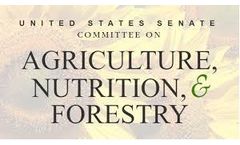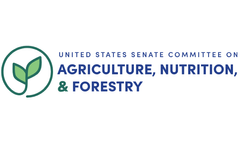Forest Scale Articles & Analysis
9 news found
I look forward to working with him to further the bipartisan work that the Senate Agriculture, Nutrition, and Forestry Committee is doing to address this urgent crisis. By harnessing our farms and forests we can protect our climate and grow our economy.” Senator Stabenow has led the effort in the U.S. ...
Senate Committee on Agriculture, Nutrition, and Forestry, today applauded the work of the Food and Agriculture Climate Alliance formed by the American Farm Bureau Federation, Environmental Defense Fund, FMI – The Food Industry Association, National Alliance of Forest Owners, National Association of State Departments of Agriculture, National Council of Farmer Cooperatives, ...
Senate Committee on Agriculture, Nutrition, and Forestry, and Mike Braun (R-Ind.), Chairman of the Subcommittee on Conservation, Forestry, and Natural Resources, introduced the bipartisan Rural Forests Markets Act to help small-scale, family foresters access new economic opportunities through climate solutions like carbon markets. ...
The bill will help break down barriers for farmers and foresters interested in participating in carbon markets so they can be rewarded for climate-smart practices. ...
The House passed a bill Thursday designed to improve the health of national forests by scaling back the environmental reviews that go into some timbering projects and discouraging lawsuits that delay projects. The goal is to speed up timber harvests and underbrush removal that the U.S. Forest Service deems necessary to improve the health of ...
The forestry sector moves up the scale at Expobiomasa If the amount of exhibition floor space seems surprising for a specialised fair devoted exclusively to biomass, then this is mainly due to the 8,000 m2 of machinery and equipment for handling timber on display in ‘Expobiomasa Forestal’ included in the main fair. This was thanks to a specific call ...
This policy brief, published by the research network NCCR North-South, argues for policies that promote planting trees in drylands on a small scale, because large-scale projects can negatively affect local ecosystems. International aid agencies and governments have been promoting large-scale planting for more than a century. But the practice is ...
Creating consumer markets for forest-grown products, reducing nonpoint source pollution, protecting waterfowl habitat, diversifying farm operations—these are just a few of the ways agroforestry is moving to the forefront of the land-use discussion in North America. ...
Incorporating results from forest hydrology studies in water policies can help avoid uncertainty and confusion caused by the current difficulties in transferring research findings to different countries and regions, varying forest types and species and diverse forest management regimes. ...







